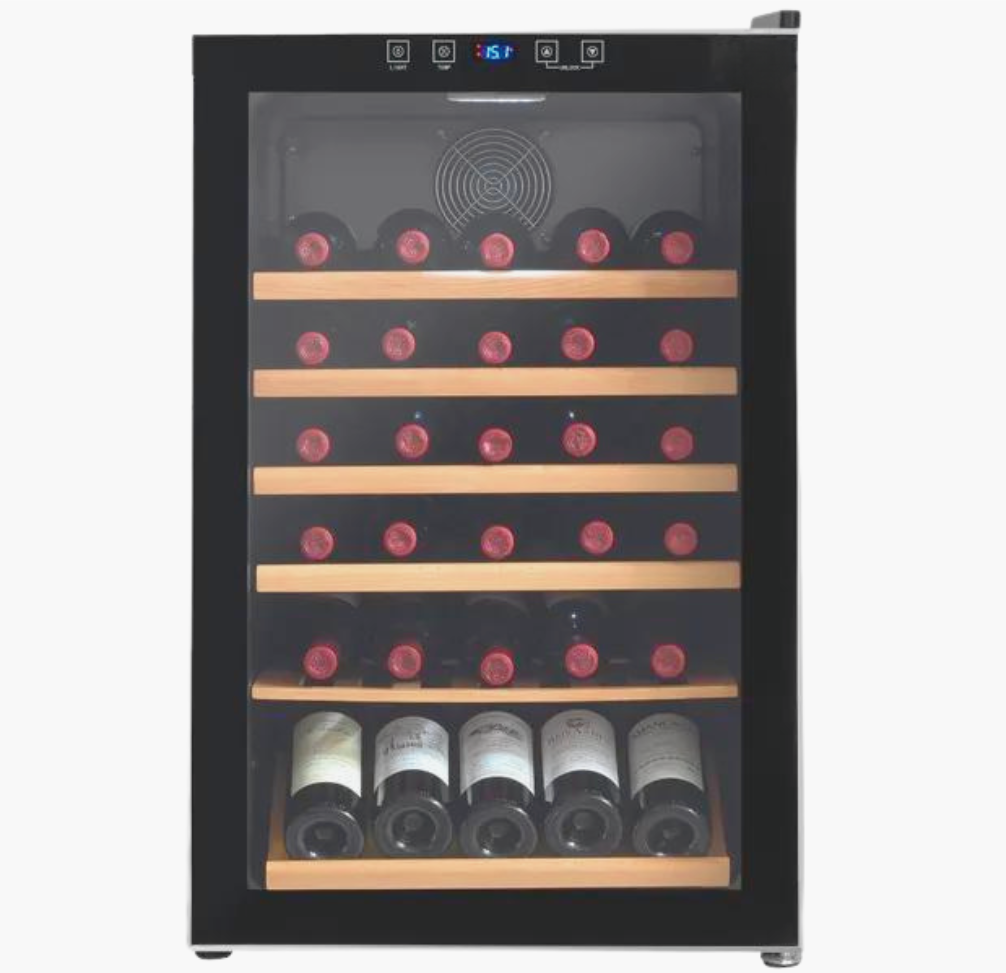We Real Cool
Looking for global cooperation partner for McCool fridge

Thermoelectric wine coolers operate using the Peltier effect, which creates a temperature difference by transferring heat from one side of the device to the other when an electric current is applied. Here’s how they work:
Thermoelectric wine coolers are known for being quiet and energy-efficient, making them a popular choice for wine enthusiasts.
There are two main operating principles of wine cabinets: “thermoelectric cooling” and “compressor”. Smaller wine cabinets often use thermoelectric cooling technology, while larger ones use compressors. Which one is more suitable for you?
Semiconductor wine cabinet:
The use of thermoelectric cooling technology is generally referred to as electronic semiconductor wine cabinets. This type of wine cabinet has a semiconductor refrigerator. After connecting to the power supply, the DC current will pass through the cooling component, and one side of the component will cool, while the other side will generate heat and be discharged through the heat dissipation device. The frozen air is then brought into the inner compartment of the wine cabinet through the fan inside the wine cabinet.
The semiconductor wine cabinet adopts an electronic semiconductor refrigeration system, so there is basically no vibration. It is generally quiet and energy-saving, suitable for storing small spaces. Due to the lack of a large refrigeration system, the interior space of the wine cabinet has greatly increased, and the weight is also relatively light. However, it should be noted that wine cabinets that use semiconductor cooling generally only have a temperature control range of 10-18 ℃, and should not be used in indoor temperatures with higher temperatures. The cooling time is also relatively long.
Compressor wine cabinet:
The compressor refrigeration system consists of a compressor, condenser, throttling components, and evaporator, and is connected by copper pipes to form a closed system. The refrigerant added to the system relies on the flow of refrigerant in the pipeline to reduce the internal temperature of the wine cabinet.
Although the operating sound of the compressor liquor cabinet is louder and heavier than that of the semiconductor liquor cabinet, the compressor has high refrigeration efficiency and short re-cooling time. The refrigeration time of the compressor is about 20% -30% of the electronic refrigeration time. The refrigeration effect and temperature control range of the compressor liquor cabinet are also relatively good, compared to the semiconductor liquor cabinet, which is only around 10-18 ℃, and the compressor liquor cabinet can be used from a minimum of 5 ℃ to a maximum of 22 ℃. Moreover, the impact of ambient temperature on the compressor wine cabinet is relatively small. Even in high-temperature environments, the temperature inside the wine cabinet can still reach the ideal storage temperature for red wine, while semiconductor wine cabinets can generally only reduce the ambient temperature by 6-8 ℃.